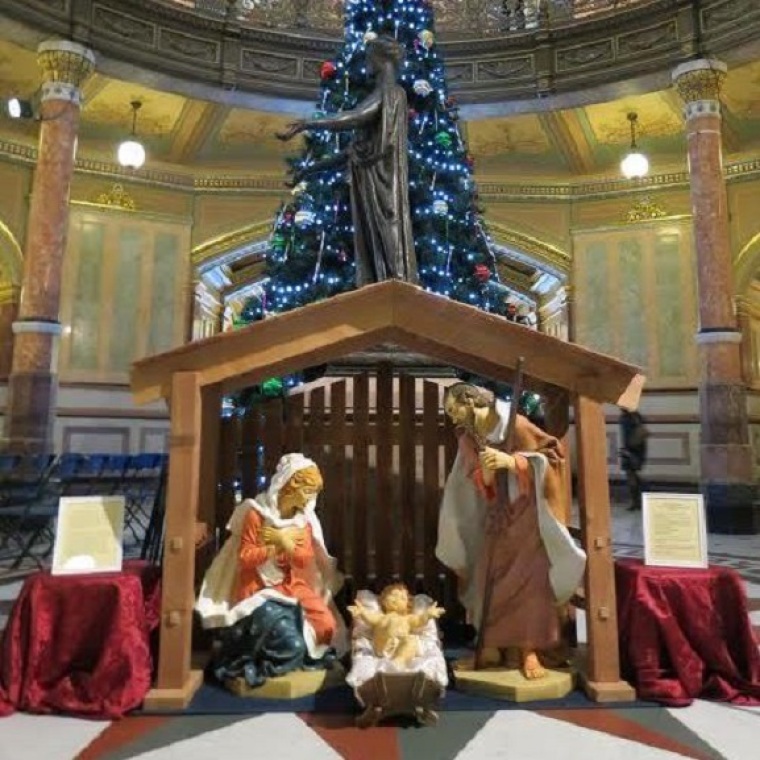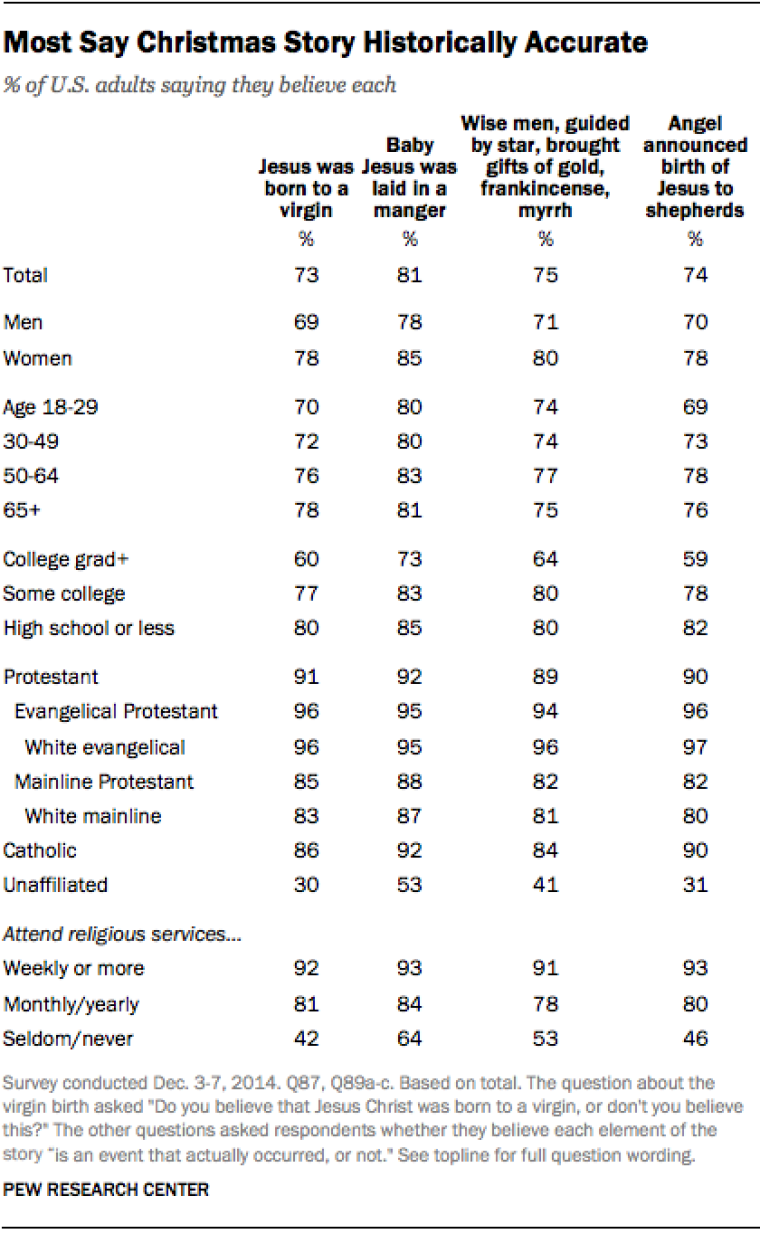Pew survey finds Christmas story no fairy tale after all

WASHINGTON, D.C. (Christian Examiner) -- Atheists trying to make their mark across southern states with billboards that mock Christianity as a fairy tale face disappointing statistics this week revealing that most adult Americans -- 73 percent to be exact -- see the story of the virgin birth of Jesus as historical fact, not fiction.
The findings are from an annual Pew Research Center survey and remain consistent to last year's statistics.

The 2014 survey results released Dec. 15 also show 81 percent of U.S. adults believe Baby Jesus was laid in a manger, 75 percent hold the account about wise men to be true, and 74 percent accept that angels announced Jesus' birth to shepherds.
Even a third of those with no religious affiliation believe in the virgin birth and more than half say the manger was Christ's bed at His birth.
The results were consistent across age ranges on the issues of the manger and wise men, but those 18 to 29 were less inclined to believe in the virgin birth and angelic proclamation. Also, more women than men agreed with all four of the Christmas story elements by 6 to 9 percent margin.
But the Pew research shows mixed feelings about nativity displays and Christian symbols placed on government property.
"Advocates on both sides of these disputes can take some heart in Americans' views," according to the report. "On the one hand, nearly three-quarters of U.S. adults (72 percent) favor allowing Christian symbols on government property in at least some cases – either by themselves [44 percent] or with symbols from other faiths [28 percent]."
But the findings also point out that looking at the data from another perspective, "nearly half of Americans (48 percent) express reservations about these displays, either saying that Christian symbols must be accompanied by those from other faiths [28 percent] or that no religious displays should be allowed on government property at all [20 percent]."